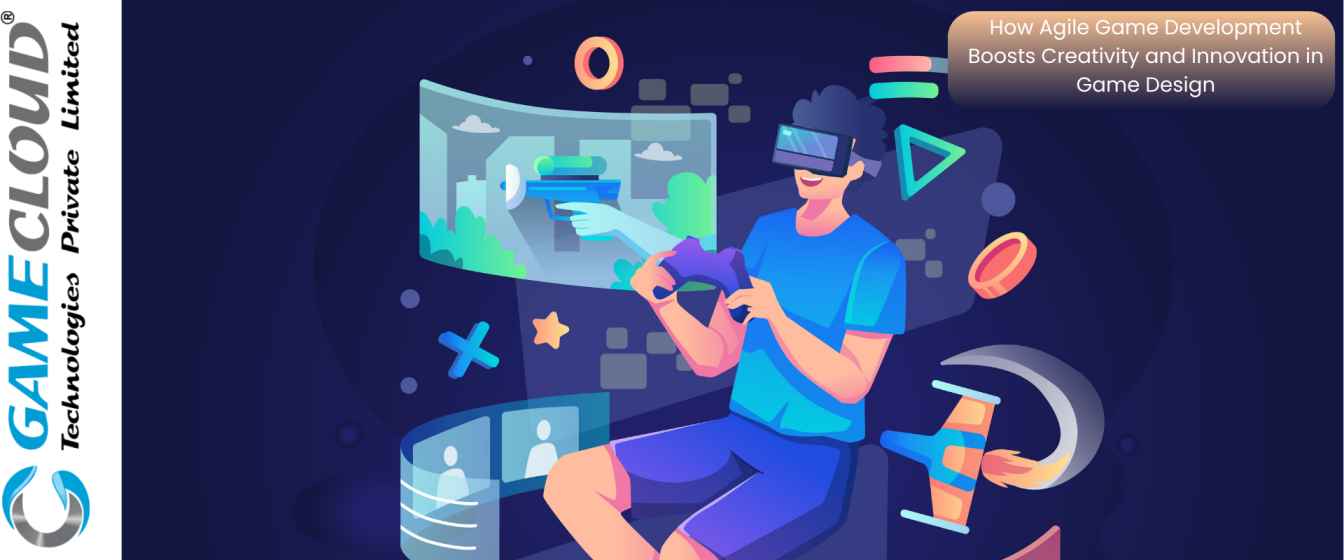
In the world of video game development, adopting Agile methodologies is more than a strategic approach; it’s a requisite evolution to stay competitive and innovative. Initially crafted for software development, Agile’s principles have profoundly influenced game development, enhancing creativity and improving output quality through structured yet flexible practices.
Agile game development thrives on principles that promote frequent iteration, team collaboration, and a keen responsiveness to change. This environment is ideal for game design, where development is dynamic and requirements can change with evolving player expectations and technological advancements.
Frequent Iteration Enhances Creativity
Agile methodologies break the game development process into shorter cycles or sprints, which allows teams to test and refine their ideas incrementally. This approach encourages experimentation and lets developers explore more creative solutions without the risk of significant time loss. Each sprint ends with a playable version of the game, enabling immediate feedback that can lead to rapid incorporation of innovative ideas in subsequent versions.
Responsiveness to Change Fuels Innovation
One of the core tenets of Agile is its embrace of adaptability, allowing game development teams to adjust their plans as new ideas and technologies emerge. This flexibility is crucial in a technology-driven field like game design, where being able to pivot based on player feedback and tech advances can significantly enhance the game’s appeal and functionality. Agile’s structure supports this continual adaptation, fostering an environment where innovation is a constant rather than a sporadic occurrence.
Collaboration Drives Creative Solutions
Agile promotes a highly collaborative work environment where all team members, including designers, developers, and testers, are encouraged to share their insights and ideas. This collective approach helps break down silos and ensures that different perspectives are considered in the decision-making process, which can lead to more creative outcomes. Regular stand-up meetings and reviews keep the team aligned on goals and responsive to each other’s creative input, which enhances the cohesiveness and innovative capacity of the product.
Challenges and Considerations
While Agile offers numerous benefits, it also presents challenges that game development teams must navigate. The shift from traditional methodologies to Agile requires a significant cultural adjustment and commitment to continuous improvement. Teams new to Agile may experience a learning curve, and finding the right balance between flexibility and maintaining a clear direction can be challenging. Additionally, Agile’s emphasis on customer feedback requires developers to be highly responsive to user input, which can sometimes divert resources from long-term goals.
Leveling Up Reality: LolzSoft’s Innovative Approach to Game Development
At LolzSoft, we’ve taken the helm from GameCloud Technologies to push the boundaries of video game development further. Our focus is on transforming unique, creative ideas into engaging and immersive gaming experiences. We pride ourselves on not just creating games for entertainment but also crafting educational games that leave a lasting impact. Our commitment is to innovation and excellence in every project, aiming to deliver memorable experiences that resonate with players of all ages.
Conclusion
In conclusion, Agile game development stands out as a powerful facilitator of creativity and innovation in an industry that demands both. By allowing for rapid iterations, embracing changes based on real-time feedback, and fostering a collaborative team environment, Agile methodologies empower developers to produce engaging and successful games that resonate with players and lead the market.
For Know More Contact-Now
FAQs for : How Agile Game Development Boosts Creativity and Innovation in Game Design
What is Agile game development, and how does it differ from traditional methods?
Agile game development is a flexible, iterative approach that emphasizes collaboration, adaptability, and frequent feedback. Unlike traditional linear methods, Agile focuses on shorter development cycles or sprints, enabling teams to refine ideas and address changes dynamically throughout the process.
How does Agile enhance creativity in game design?
Agile promotes creativity by breaking the development process into smaller, manageable sprints. This allows teams to experiment, test new ideas, and quickly implement feedback without the risk of major time or resource loss. Frequent iterations encourage innovation by providing continuous opportunities to improve and adapt.
Why is adaptability important in Agile game development?
The gaming industry evolves rapidly due to advancements in technology and shifting player expectations. Agile’s adaptability enables teams to pivot in response to feedback, market trends, or technological changes, ensuring games stay relevant, functional, and engaging.
How does collaboration play a role in Agile game development?
Agile fosters a collaborative environment where team members from diverse roles—designers, developers, and testers—work closely together. Regular stand-ups and reviews ensure alignment and encourage sharing of creative ideas, leading to innovative solutions and cohesive game designs.
What challenges might teams face when adopting Agile methodologies?
Transitioning to Agile can be challenging, requiring a cultural shift and commitment to continuous improvement. Teams may face a learning curve, struggle to balance flexibility with direction, or find it demanding to stay responsive to frequent user feedback without straying from long-term goals.
